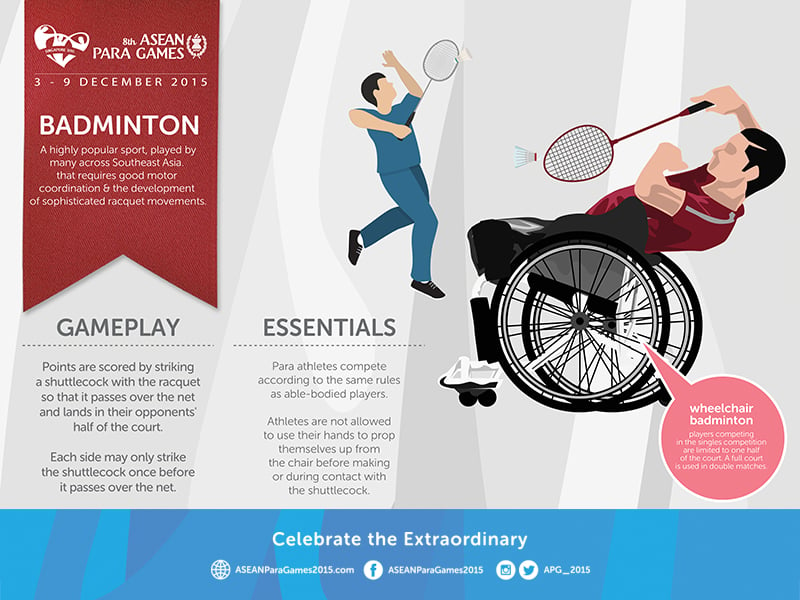What is Para Badminton
 It is believed that Badminton originated from a game called Poona, a pastime in Bombay, India during the 1820s played by hitting with the palm or battledore a ball made of feathers attached to a cork. The game intrigued the Duke of Beaufort in England, who established the basic rules of the game and named it after his estate, Badminton. The subsequent establishment of the International Badminton Federation (IBF) in 1934 marked the global expansion of the sport outside England.
It is believed that Badminton originated from a game called Poona, a pastime in Bombay, India during the 1820s played by hitting with the palm or battledore a ball made of feathers attached to a cork. The game intrigued the Duke of Beaufort in England, who established the basic rules of the game and named it after his estate, Badminton. The subsequent establishment of the International Badminton Federation (IBF) in 1934 marked the global expansion of the sport outside England.
Classification
In Badminton, players who compete in wheelchairs fall under the Sport class of “WH”, and athletes who stand while competing, and use their lower limb or upper limb falls under the prefix “SL”, and “SU” respectively.
|
Sport Class WH1 |
|
|
Sport Class WH2 |
|
|
Sport Class SL3 |
|
|
Sport Class SL4 |
|
|
Sport Class SU5 |
|
|
Sport Class SU6 |
|
Tournament Rules
Badminton for athletes with disabilities consists of the same rules and regulations set forth by the Badminton World Federation (BWF) with a few modifications added in consideration of specific physical disabilities. Singles matches for players in wheelchairs are limited to one half of the court due to limited reach, but doubles matches use the full court as with regular badminton.
In wheelchair badminton, players must ensure that some part of his torso is in contact with the seat of the wheelchair when striking. The player's feet should maintain contact with the foothold while the shuttlecock is in play and must not come in contact with the floor. In addition, the foothold propping up the player's feet cannot come in contact with the floor while the shuttlecock is in play.
Players cannot use their legs for support, and are prohibited from using their hands to prop up their body right before or during contact with the shuttlecock.





![ActiveSG Academies and Clubs Logo (Solid Colour)[8647]](https://www.activesgcircle.gov.sg/hs-fs/hubfs/ActiveSG%20Circle%202023Theme/images/ActiveSG%20Academies%20and%20Clubs%20Logo%20(Solid%20Colour)%5B8647%5D.png?width=150&height=65&name=ActiveSG%20Academies%20and%20Clubs%20Logo%20(Solid%20Colour)%5B8647%5D.png)



-01.png?width=200&height=141&name=Team%20Singapore%20Logo%20(Red)-01.png)



